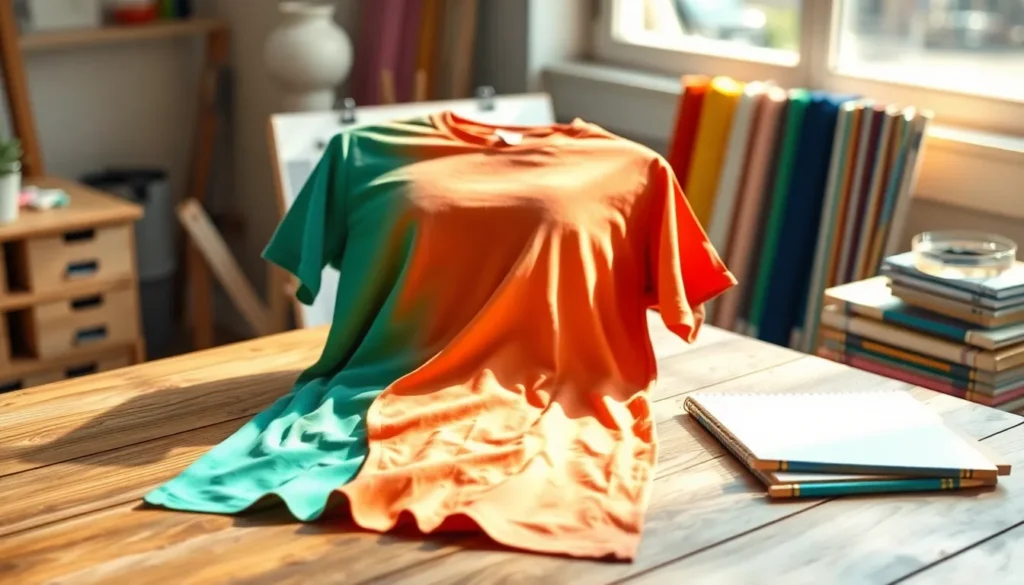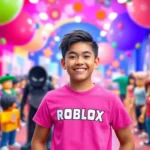We’ve all been there – staring at a blank t-shirt design wondering how it’ll actually look on a real person. Mock up t-shirts have revolutionized the way designers, entrepreneurs, and brands showcase their creative visions before committing to expensive production runs.
Whether you’re launching a new clothing line, testing design concepts, or presenting ideas to clients, t-shirt mockups save time, money, and countless headaches. They let you visualize your artwork on realistic garments without printing a single shirt. From photorealistic templates to customizable backgrounds, today’s mockup tools offer endless possibilities for bringing your designs to life.
We’ll explore everything you need to know about creating stunning t-shirt mockups that convert browsers into buyers. You’ll discover the best tools, techniques, and insider secrets that professional designers use to make their concepts pop off the screen.
Understanding Mock Up T-Shirt Basics and Their Importance
Building on the foundation of mockup benefits we’ve explored, let’s dive deeper into the essential elements that make t-shirt mockups indispensable tools for modern designers.
What Are Mock Up T-Shirts and Why Use Them
Mock up t-shirts are digital templates that showcase designs on realistic garment representations without physical production. These sophisticated tools allow us to visualize artwork, logos, or graphics on various t-shirt styles, colors, and fits using photorealistic renderings.
Purpose-driven design presentation becomes effortless when we use these digital assets. Mock ups eliminate the guesswork by showing exactly how our designs will appear on actual clothing. We can test different color combinations, placement options, and sizing variations instantly.
Professional designers rely on mock ups to communicate design concepts effectively to clients and stakeholders. Rather than explaining abstract ideas, we present concrete visual examples that demonstrate the final product’s potential. This approach reduces miscommunication and ensures everyone shares the same vision.
Cost-effective experimentation becomes possible through digital mock ups rather than physical sampling. We can explore dozens of design variations without spending money on blank t-shirts, printing materials, or production setup costs.
Benefits of Using Mock Up T-Shirts for Design Presentations
Enhanced client communication results from presenting designs in realistic contexts rather than flat artwork files. Mock ups bridge the gap between creative vision and practical application, helping clients understand how designs translate to wearable products.
Time savings multiply when we use mock ups instead of creating physical prototypes for every design iteration. A single mock up session can produce multiple presentation-ready images in minutes, compared to hours or days required for physical sampling.
Marketing material creation becomes streamlined with professional-quality mock up images ready for online stores, social media, and promotional campaigns. These visuals maintain consistency across all platforms while showcasing products in their best light.
Design validation occurs more efficiently when we can quickly assess how artwork performs across different t-shirt styles and colors. Mock ups reveal potential issues like poor contrast, awkward placement, or sizing problems before production begins.
Portfolio enhancement happens naturally as mock ups transform simple designs into compelling showcase pieces that demonstrate real-industry application. We can build impressive design portfolios without manufacturing every concept we create.
Industry Standards for Mock Up T-Shirt Quality
Resolution requirements typically demand 300 DPI or higher for print-ready mock ups that maintain crisp detail at various sizes. Professional mock ups should support both web display at 72 DPI and high-resolution printing without pixelation or quality loss.
Color accuracy standards require mock ups to display designs using CMYK or Pantone color profiles that match actual printing capabilities. We need mock ups that show realistic color representation rather than oversaturated RGB displays that won’t translate to physical products.
Template versatility ensures mock ups include multiple angles, lighting conditions, and background options for comprehensive design presentation. Industry-standard mock ups provide front views, back views, flat lays, and worn presentations to showcase designs completely.
File format compatibility becomes crucial when mock ups support popular design software like Photoshop, Illustrator, and Canva. Smart object functionality allows us to replace placeholder designs with our artwork while maintaining shadows, highlights, and realistic fabric textures.
Licensing terms establish clear usage rights for commercial applications, ensuring we can use mock ups for client work and product sales without legal restrictions. Professional mock up providers offer extended licenses that cover unlimited projects and client presentations.
Choosing the Right Mock Up T-Shirt Style for Your Brand
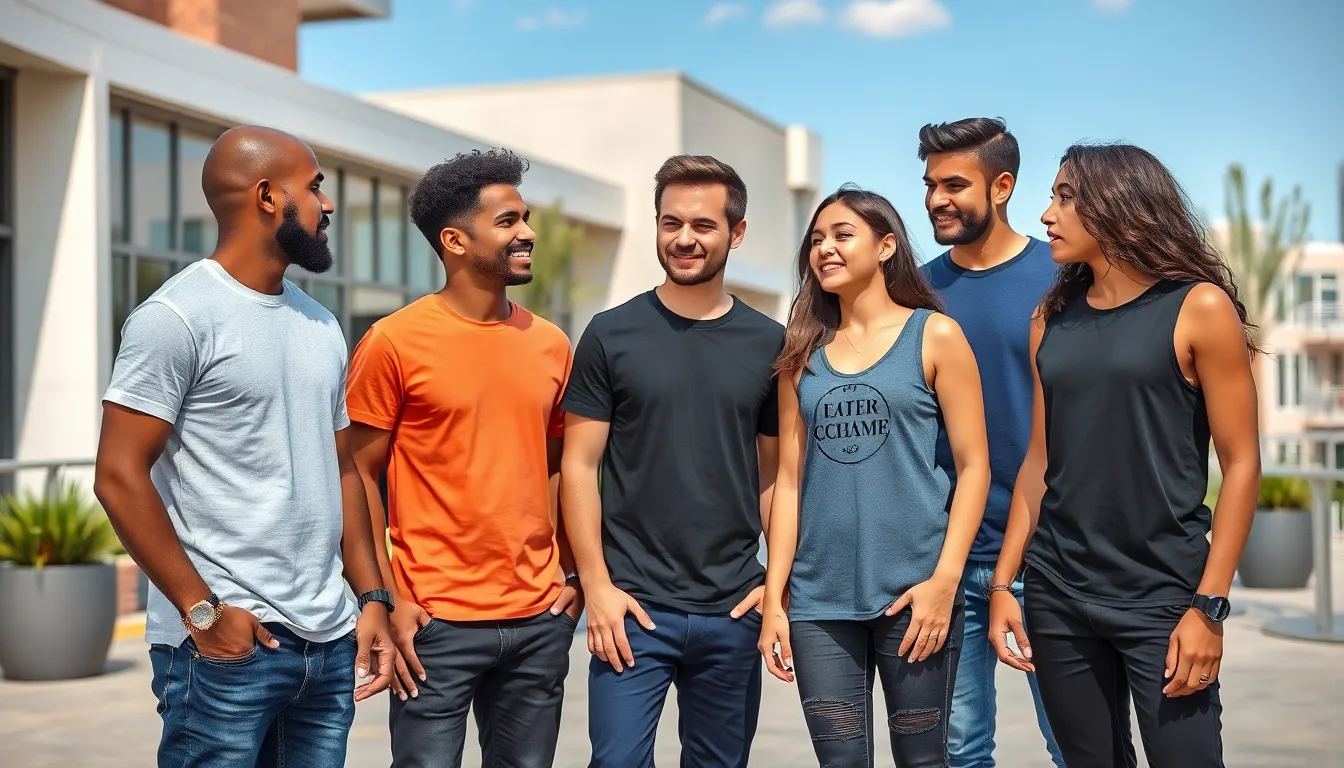
Selecting the perfect mockup t shirt style directly impacts how your target audience perceives your brand identity. Different necklines and sleeve options appeal to distinct demographics and serve various marketing purposes.
Classic Crew Neck Mock Up T-Shirt Options
Classic crew neck mockups dominate the industry because they offer universal appeal across all age groups and gender demographics. These traditional round neckline templates work exceptionally well for corporate branding, band merchandise, promotional campaigns, and retail apparel lines.
Most professional designers prefer crew neck mockups for their versatility in showcasing logo placements, text designs, and graphic elements without neckline interference. The clean silhouette provides maximum surface area for design visibility while maintaining a timeless aesthetic that transcends fashion trends.
Premium crew neck mockup templates typically include multiple angles like front view, back view, folded presentations, and hanging displays. These variations help brands demonstrate design placement options and create comprehensive product catalogs for e-commerce platforms.
V-Neck and Scoop Neck Variations
V-neck mockup t shirts target fashion-forward audiences and brands positioning themselves in the premium casual wear market. The angular neckline creates visual interest and appeals particularly to female consumers seeking stylish alternatives to traditional crew necks.
Scoop neck variations offer deeper, curved necklines that work well for women’s apparel brands and lifestyle companies targeting younger demographics. These mockup styles emphasize femininity and casual elegance, making them ideal for boutique clothing lines and social media marketing campaigns.
Both v-neck and scoop neck mockups require careful design consideration since the neckline shape can interfere with certain logo placements and text arrangements. We recommend testing multiple design positions to ensure optimal visual balance and brand message clarity.
Long Sleeve and Tank Top Alternatives
Long sleeve mockup t shirts expand seasonal marketing opportunities and allow brands to showcase designs across different weather conditions and style preferences. These templates work exceptionally well for outdoor brands, fitness companies, and casual wear lines targeting cooler climates.
Tank top mockups appeal to athletic brands, summer campaigns, and fitness-focused businesses seeking to emphasize active lifestyle positioning. The sleeveless design maximizes arm and shoulder area visibility while creating opportunities for side panel branding and unique graphic placements.
Layering possibilities increase significantly with long sleeve mockups, allowing brands to demonstrate how their designs work with jackets, cardigans, and other outerwear. Tank top variations excel in fitness and beach lifestyle marketing scenarios where the garment’s functionality becomes part of the brand story.
Essential Features to Look for in Quality Mock Up T-Shirts

Quality mockup t-shirts combine technical excellence with practical functionality to deliver professional results. We’ve identified the core features that separate premium templates from basic alternatives.
Resolution and Image Quality Requirements
High-resolution specifications ensure your designs maintain crisp details across all applications. Professional mockups deliver minimum 3000×3000 pixel dimensions at 300 DPI, providing sufficient quality for both digital presentations and print materials.
Print-ready quality becomes crucial when clients need mockups for marketing campaigns or product catalogs. We recommend templates that support 4K resolution or higher, allowing for detailed zoom capabilities without pixelation concerns.
Color depth accuracy affects how realistic your final presentation appears to potential customers. Look for 16-bit color depth support that captures subtle gradations and maintains color fidelity across different viewing environments.
File size optimization balances quality with workflow efficiency. Premium templates compress intelligently, maintaining visual excellence while keeping file sizes manageable for faster processing and storage.
Editable Layer Options and Smart Objects
Smart object functionality streamlines the design placement process through simple drag-and-drop operations. Quality mockups feature properly configured smart objects that automatically apply perspective distortion and lighting adjustments to your artwork.
Separated design layers provide granular control over different mockup elements. We prefer templates that isolate the t-shirt design, background, shadows, and highlights into individual layers for maximum customization flexibility.
Non-destructive editing capabilities protect your original artwork while allowing unlimited modifications. Advanced mockups preserve your design files in their original state, enabling quick revisions without quality degradation.
Background replacement options expand creative possibilities for different presentation contexts. Premium templates include transparent backgrounds or easily swappable backdrop layers for seamless integration with various marketing materials.
Multiple Angle and Perspective Views
Front and back combinations showcase complete design concepts in comprehensive presentations. Professional mockup packages typically include matching front and back views that maintain consistent lighting, fabric texture, and model positioning.
Flat lay arrangements offer clean, distraction-free design displays perfect for e-commerce applications. These overhead perspectives eliminate shadows and wrinkles, presenting your artwork with maximum clarity and minimal visual interference.
Hanging and folded variations provide versatile presentation options for different marketing contexts. Quality sets include multiple display methods, from closet hangers to neatly folded stack arrangements that suit various brand aesthetics.
Model-worn perspectives add human context that helps customers visualize the final product. Premium mockups feature diverse model options with natural poses and realistic fabric draping that enhances the overall presentation impact.
Top Software and Platforms for Creating Mock Up T-Shirts

Professional designers rely on specialized tools to transform their creative visions into compelling product presentations. We’ll explore the most effective platforms for creating stunning mock up t shirt designs.
Adobe Photoshop Mock Up T-Shirt Templates
Adobe Photoshop remains the industry gold standard for mock up t shirt creation, offering unparalleled customization capabilities and professional-grade results. Smart object functionality allows designers to replace placeholder designs with their artwork in seconds, while maintaining realistic fabric textures and shadows. We can leverage Photoshop’s advanced layer masking tools to create authentic wrinkles, folds, and lighting effects that make digital mockups nearly indistinguishable from actual product photography.
Template marketplaces like GraphicRiver and Creative Market provide thousands of Photoshop-compatible mock up t shirt files ranging from $5 to $50 per template. These professionally crafted templates include multiple color variations, adjustable lighting setups, and organized layer structures that streamline the design process. We’ve found that premium templates often include bonus elements like hangers, tags, and lifestyle props that enhance presentation value.
Photoshop’s 3D capabilities enable designers to create custom mock up t shirt angles and perspectives without purchasing additional templates. The software’s built-in 3D mesh tools can wrap designs around virtual garments, though this feature requires more technical expertise than traditional smart object workflows.
Online Mock Up Generators and Tools
Placeit by Envato offers browser-based mock up t shirt generation with over 10,000 apparel templates and requires no software installation. Users simply upload their designs, select customization options, and download high-resolution images within minutes. We particularly appreciate Placeit’s model diversity, featuring different body types, ethnicities, and age ranges that help brands connect with varied audiences.
Mockup Industry provides free and premium online tools specifically designed for apparel mockups, with templates organized by garment type, color, and presentation style. Their drag-and-drop interface makes mock up t shirt creation accessible to beginners, while advanced users can adjust lighting, shadows, and background elements. The platform generates files up to 4000×4000 pixels, suitable for both web and print applications.
Canva’s mock up t shirt generator integrates seamlessly with their design network, allowing users to create artwork and apply it to apparel templates without switching platforms. We’ve observed that Canva’s templates work best for simple designs and text-based graphics, though complex artwork may require manual adjustments for optimal results.
Smartmockups focuses exclusively on product mockups and offers real-time preview capabilities that show design changes instantly. Their mock up t shirt collection includes flat lay styles, hanging presentations, and lifestyle scenes with professional photography backgrounds. Subscription plans start at $14 monthly and include unlimited downloads.
Free vs Premium Mock Up T-Shirt Resources
Free mock up t shirt templates provide excellent starting points for budget-conscious designers, though they typically include watermarks or require attribution. Websites like Freepik, Pixeden, and MockupFree offer basic templates with standard poses and limited customization options. We recommend free resources for personal projects, portfolio development, or initial concept testing before investing in premium alternatives.
| Resource Type | Typical Cost | Resolution | Commercial Use | Customization Level |
|---|---|---|---|---|
| Free Templates | $0 | 1500-2500px | Limited/Attribution | Basic |
| Premium Individual | $5-25 | 3000-5000px | Full Rights | Advanced |
| Subscription Plans | $14-50/month | Up to 6000px | Unlimited | Professional |
| Custom Creation | $100-500+ | Any Size | Exclusive | Complete |
Premium mock up t shirt resources justify their cost through superior quality, extensive licensing rights, and comprehensive customization options. Professional templates include multiple file formats (PSD, AI, PNG), organized layer structures, and detailed documentation that accelerates workflow efficiency. We’ve found that premium mockups consistently deliver better lighting realism, fabric texture accuracy, and overall presentation polish.
Subscription services like Envato Elements provide unlimited access to thousands of mock up t shirt templates for a flat monthly fee, making them cost-effective for agencies and frequent users. These platforms regularly add new content and offer exclusive designs unavailable elsewhere. But, individual template purchases may be more economical for occasional users or exact project requirements.
Custom mock up t shirt creation offers the highest level of brand alignment but requires important time and skill investment. Professional photographers and 3D artists can create exclusive mockups customized to exact brand aesthetics, though costs typically range from $100 to $500 per template depending on complexity and usage rights.
Best Practices for Customizing Your Mock Up T-Shirt Designs
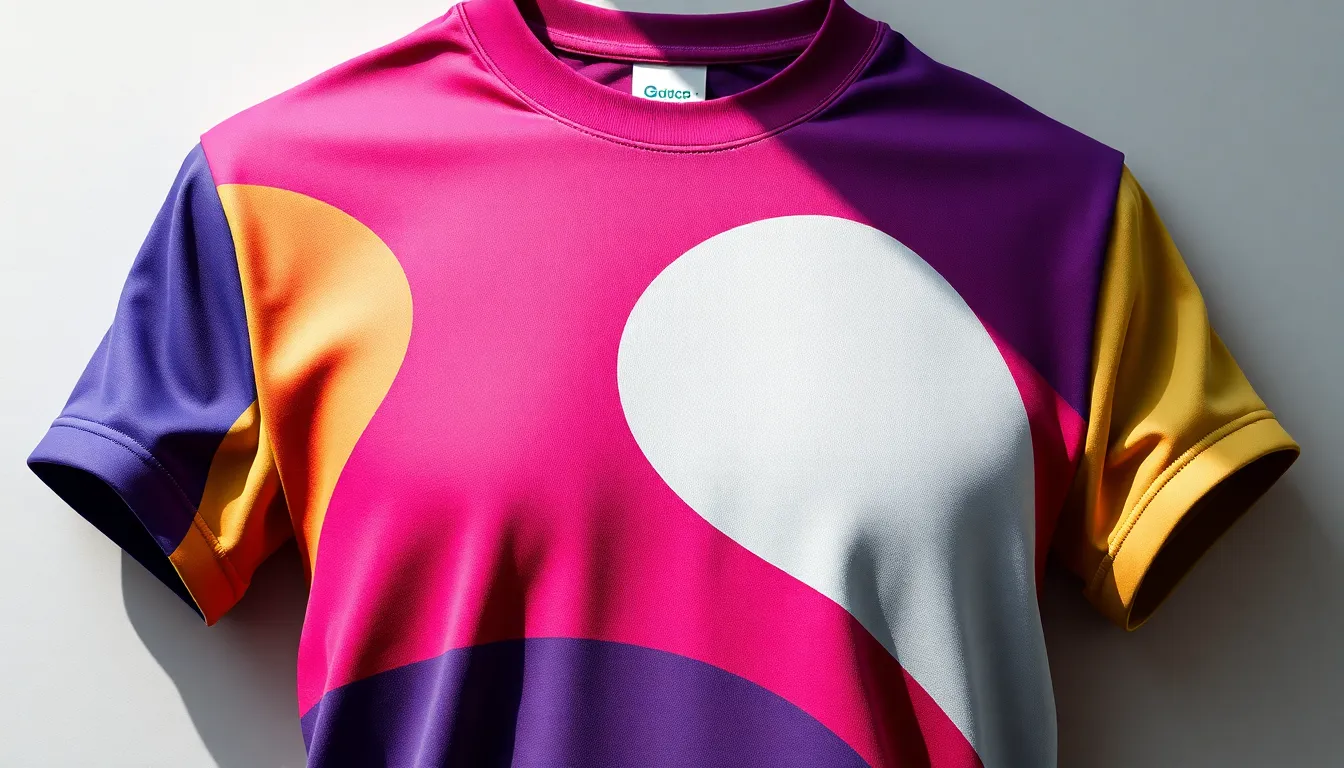
Professional mockup customization transforms basic templates into compelling brand presentations that drive sales and engage audiences. Mastering these techniques ensures your designs stand out in competitive markets while maintaining brand integrity across all presentations.
Proper Logo and Text Placement Techniques
Center placement creates the most balanced visual impact for logos and primary text elements. We position main designs 3-4 inches below the neckline for optimal visibility and standard industry placement. This positioning works effectively for crew neck mockups, v-neck styles, and most traditional t-shirt presentations.
Left chest positioning suits brand logos, company emblems, and subtle text designs perfectly. Professional designers place these elements 4-5 inches from the left seam and 7-8 inches down from the shoulder seam. This technique works exceptionally well for corporate apparel mockups and branded merchandise presentations.
Oversized graphic placement requires careful consideration of garment proportions and design scaling. We ensure oversized designs maintain 1-2 inch margins from side seams while keeping the top edge at least 2 inches below the neckline. Tank top mockups and long sleeve alternatives need adjusted spacing to accommodate different garment proportions.
Text alignment principles demand consistent spacing and readable font sizing across all mockup presentations. Choose font sizes between 12-18 points for body text and 24-36 points for headlines to ensure legibility. Multiple text elements require hierarchical spacing with primary messages receiving the most prominent placement.
Color Matching and Brand Consistency
RGB color space management ensures accurate color representation across digital mockup presentations. We convert all brand colors to RGB values before applying them to mockup templates, maintaining consistency with web and social media applications. Document these RGB values in a brand style guide for consistent future use.
Pantone color reference provides the most accurate color matching for print production planning. Match mockup colors to exact Pantone numbers when possible, especially for corporate clients requiring exact brand color reproduction. This technique bridges the gap between digital mockups and physical production requirements.
Fabric texture considerations affect how colors appear on different garment materials and mockup styles. Darker fabrics require lighter design elements for visibility, while white and light colored shirts showcase vibrant colors most effectively. Test color combinations across multiple mockup templates to ensure optimal visual impact.
Brand guideline adherence maintains professional consistency across all mockup presentations and client deliverables. Follow established brand color palettes, typography rules, and logo usage guidelines when customizing any mockup template. This approach builds trust with clients and reinforces brand identity through every design presentation.
Realistic Lighting and Shadow Effects
Natural lighting simulation creates the most believable mockup presentations that customers can relate to easily. We apply soft, diffused lighting that mimics indoor natural light or outdoor shade conditions. This technique works best with crew neck mockups, v-neck variations, and most professional presentation requirements.
Shadow depth adjustment adds dimensional realism to flat design elements placed on mockup templates. Create subtle drop shadows with 2-3 pixel blur radius and 25-35% opacity for text elements. Logo shadows should be even more subtle, using 1-2 pixel blur with 15-25% opacity to maintain professional appearance.
Directional consistency ensures all lighting elements come from the same source across multiple mockup angles. Match shadow directions between front and back mockup views, maintaining the same light source position throughout the presentation. This attention to detail creates cohesive mockup series that look professionally photographed.
Environmental reflection effects enhance realism in mockup presentations by mimicking natural light bounce and ambient conditions. Add slight highlight effects to raised design elements and subtle color temperature variations that match the mockup’s background environment. These effects work particularly well with model worn perspectives and lifestyle mockup settings.
Common Mistakes to Avoid When Using Mock Up T-Shirts
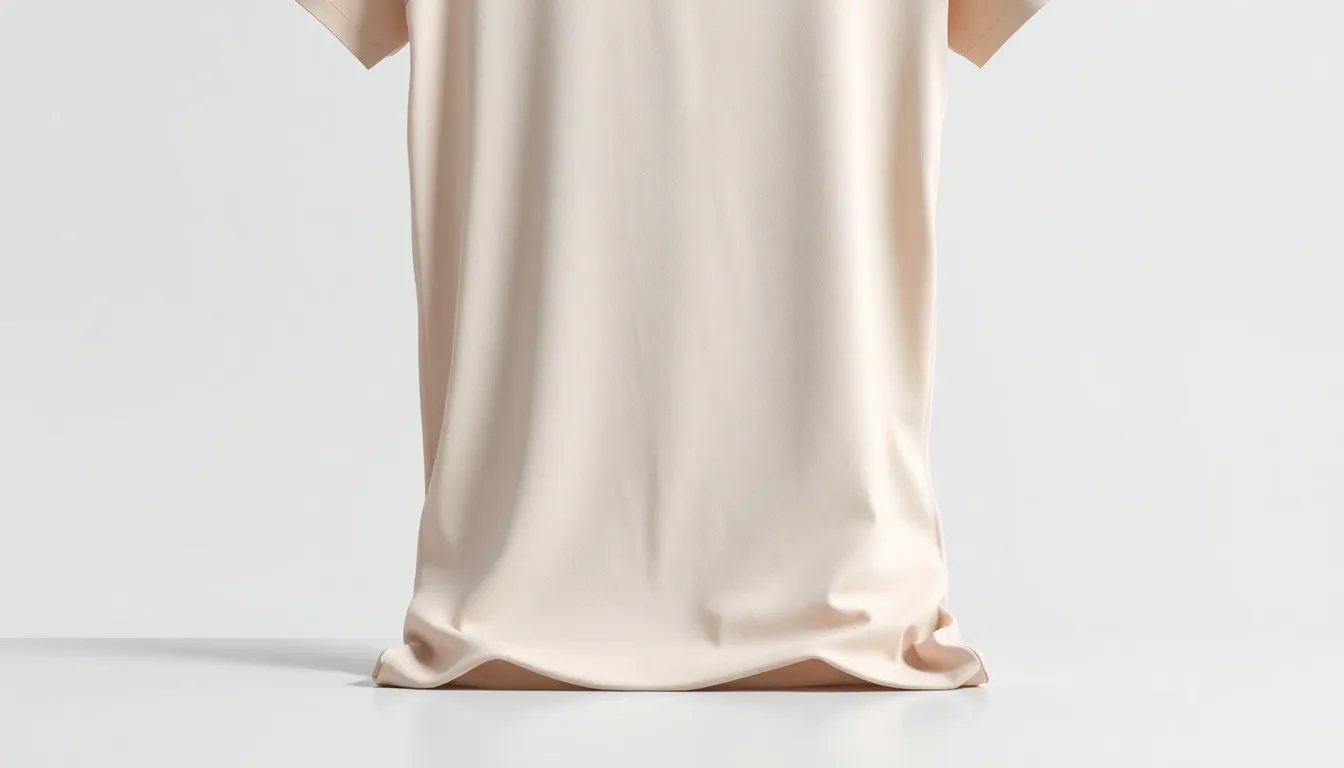
Successful mockup implementation requires attention to detail and understanding of common pitfalls that can undermine your design presentations. Learning from these frequent mistakes ensures your t-shirt mockups maintain professional quality and effectively communicate your brand message.
Poor Resolution and Pixelated Results
Poor resolution destroys the professional appearance of your mockup presentations and makes designs appear unprofessional to potential customers. We often see designers using low-quality source files that result in pixelated artwork when applied to mockup templates.
Always start with high-resolution design files that match your mockup specifications. Template files should maintain a minimum 3000×3000 pixel dimension at 300 DPI to ensure crisp, professional results across all viewing platforms.
Scaling up smaller images creates blurry, unprofessional mockups that damage brand credibility. Instead, create your original designs at the highest possible resolution to maintain image quality throughout the mockup process.
Check your final mockup output at 100% zoom to identify any pixelation issues before sharing with clients or using in marketing materials. Quality control at this stage prevents embarrassing presentation mistakes that could cost you sales opportunities.
Unrealistic Design Proportions
Unrealistic design proportions make mockups look fake and unconvincing to viewers who can immediately recognize distorted artwork placement. Many designers stretch or compress their designs to fit mockup templates without considering how the artwork would naturally appear on fabric.
Study actual t-shirt designs to understand proper sizing relationships between artwork and garment dimensions. Design elements should maintain their original aspect ratios when applied to curved or angled mockup surfaces.
Position designs according to industry standard placement guidelines rather than forcing artwork into predetermined template areas. Front designs typically sit 3-4 inches below the neckline and center horizontally on the chest area.
Consider fabric draping and natural garment movement when applying designs to mockup templates that show models wearing the shirts. Static designs should follow the natural contours and folds of the fabric to maintain believability.
Inconsistent Branding Elements
Inconsistent branding elements across mockup presentations confuse customers and weaken brand recognition in competitive markets. We frequently encounter mockups that use different color schemes, fonts, or logo variations within the same product line.
Establish clear brand guidelines before creating mockup series to ensure consistency across all design presentations. Document exact color codes, typography choices, and logo usage requirements for your entire design team.
Apply the same background styles, lighting conditions, and presentation angles across related mockup designs to create cohesive product catalogs. Consistent environmental elements help customers focus on design differences rather than presentation variations.
Maintain uniform color accuracy across all mockup files by using standardized RGB color profiles and calibrated monitors during the design process. Color inconsistencies between mockups can suggest poor quality control to potential buyers.
Professional Tips for Presenting Mock Up T-Shirts to Clients
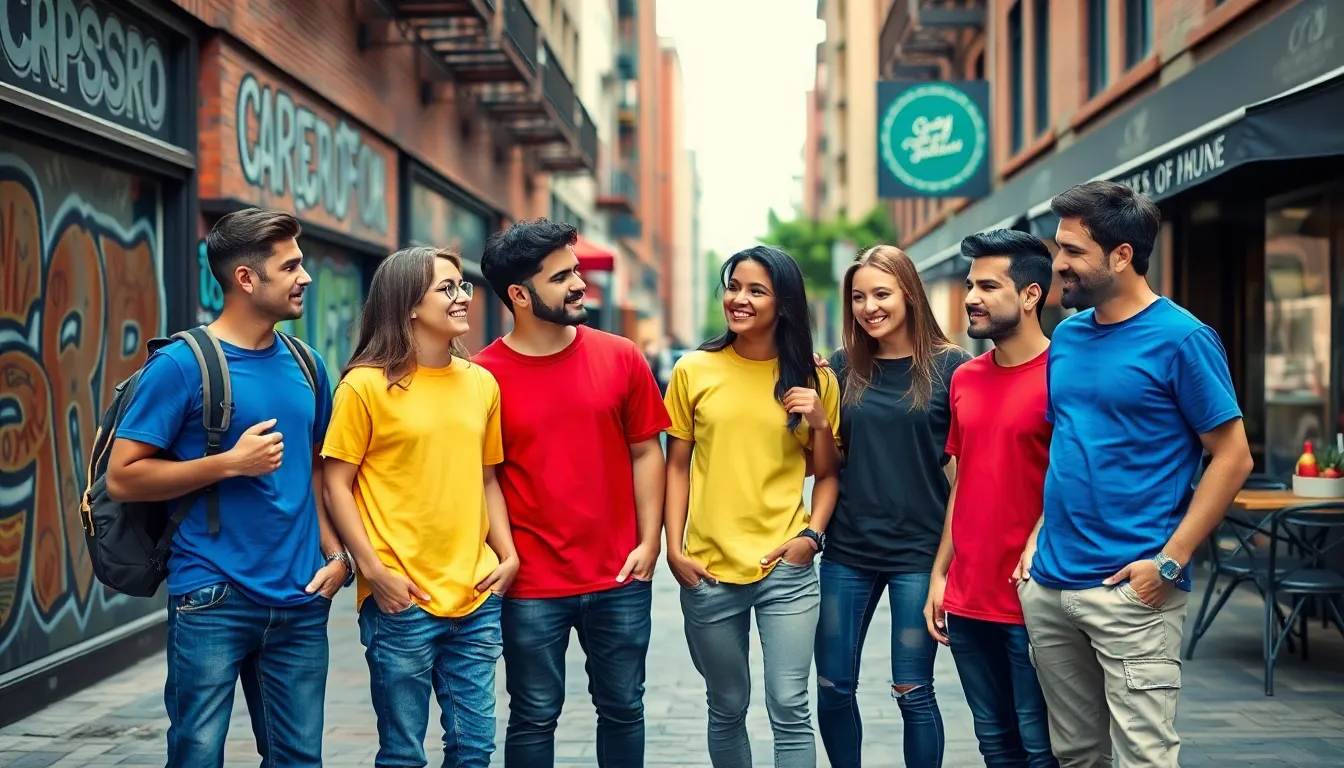
Presenting mockup t-shirts effectively can make or break client relationships and project approvals. We’ve compiled essential strategies that transform basic design presentations into compelling visual narratives that win client confidence.
Creating Compelling Portfolio Presentations
Curating mockups strategically helps clients visualize the full potential of your design concepts. We recommend selecting 3-5 mockup variations that demonstrate different use cases rather than overwhelming clients with dozens of similar angles.
Organizing presentations chronologically guides clients through your design journey from concept to final execution. We structure our presentations to show initial sketches alongside polished mockups, creating a narrative that justifies our design decisions and demonstrates professional growth.
Including technical specifications within mockup presentations builds client trust and reduces revision cycles. We overlay fabric details, size measurements, and color codes directly onto our mockup images, ensuring clients understand every aspect of the proposed design.
Maintaining consistent visual branding across all mockup presentations reinforces your professional identity. We use standardized background colors, typography choices, and layout grids that align with our studio’s visual guidelines, creating a cohesive experience that clients remember.
Showcasing Multiple Colorway Options
Presenting color variations systematically allows clients to compare options without confusion or decision fatigue. We arrange colorway mockups in grid formations with neutral backgrounds, ensuring each variation receives equal visual weight and consideration.
Using seasonal color palettes demonstrates market awareness and strategic thinking beyond basic design execution. We create mockup collections that reflect current Pantone trends, seasonal preferences, and target demographic research to position designs for maximum commercial success.
Highlighting best selling color combinations from industry data helps clients make informed decisions about production priorities. We include mockups in proven color schemes like black and white, navy and gray, or trending combinations that perform well in retail environments.
Providing color matching references ensures accurate production and reduces costly printing errors. We attach Pantone color codes, hex values, and CMYK breakdowns to each colorway mockup, giving print vendors precise specifications for consistent results.
Adding Context with Lifestyle Settings
Selecting environments that match brand positioning elevates mockup presentations from simple product displays to lifestyle narratives. We choose backgrounds like urban street scenes for streetwear brands or coffee shop settings for casual apparel lines that resonate with target audiences.
Including relevant props and accessories creates authentic scenarios where your t-shirt designs naturally belong. We add items like skateboards for youth brands, laptops for tech companies, or musical instruments for band merchandise to establish clear brand associations.
Featuring diverse model representations ensures broader client appeal and demonstrates inclusive brand values. We use mockup templates featuring various ages, ethnicities, and body types to show how designs work across different customer segments.
Incorporating brand appropriate activities shows t-shirt designs in realistic usage scenarios that clients can easily imagine. We create mockups showing people wearing designs while exercising, socializing, working, or captivating in hobbies that align with the brand’s core values and customer lifestyle.
Budget-Friendly Mock Up T-Shirt Solutions
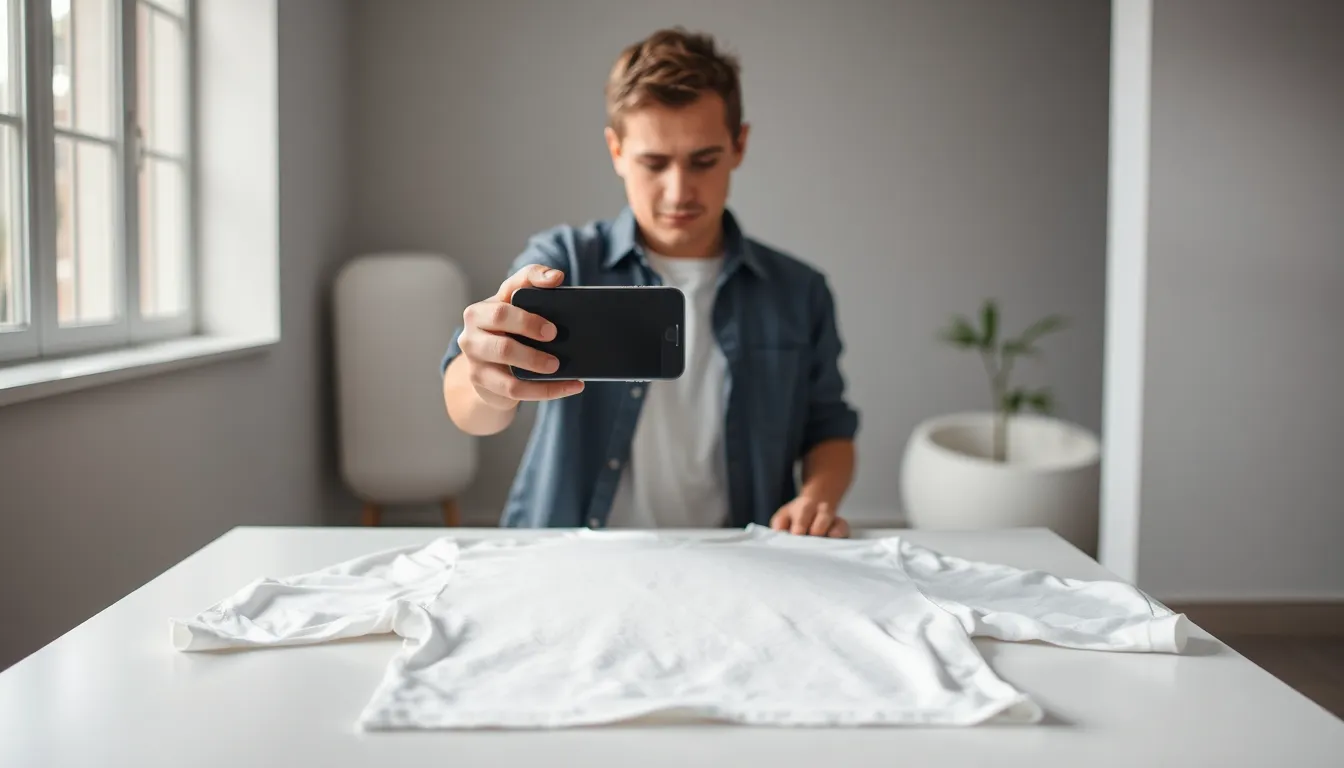
Creating professional mockup t-shirts doesn’t require very costly when you know where to find quality resources. We’ve identified several cost-effective approaches that deliver impressive results without compromising your project budget.
Free Resources and Open Source Options
Freepik and Unsplash offer extensive collections of free mockup templates that rival premium alternatives in quality and versatility. We recommend starting with their basic crew neck and v-neck collections, which provide solid foundations for most design projects. Pixeden maintains a growing library of free PSD mockups with smart object functionality, making design placement straightforward even for beginners.
Open source platforms like GitHub host community-created mockup projects that designers can modify and redistribute freely. Many contributors share layered PSD files with detailed documentation, allowing you to learn advanced techniques while building your template library. Mockup Industry aggregates free resources from multiple sources, saving valuable research time when hunting for exact styles or angles.
Creative Commons licensed mockups provide another excellent avenue for budget-conscious designers who need commercial usage rights. We find these resources particularly valuable for client work, as they eliminate licensing concerns that could arise with standard free templates. Behance and Dribbble frequently showcase free mockup releases from professional designers looking to build their portfolios.
Affordable Premium Template Collections
GraphicRiver templates typically range from $5-15 per mockup bundle, delivering professional quality at fraction of custom creation costs. We’ve found their multi-angle packages particularly valuable, often including 8-12 different perspectives within a single purchase. Creative Market runs regular promotions offering premium mockup collections for under $20, with some designer bundles containing 50+ templates.
Subscription-based platforms like Envato Elements provide unlimited downloads for approximately $16 monthly, making them cost-effective for designers who regularly create mockup presentations. We calculate that downloading just 3-4 premium mockup sets monthly justifies the subscription cost compared to individual purchases. Design Cuts offers limited-time bundles featuring hundreds of mockup templates for $29-39, representing exceptional value when you need diverse style options.
Seasonal sales events on major marketplaces can reduce premium mockup costs by 50-70%, particularly during Black Friday and summer promotions. Many template creators offer loyalty discounts for repeat customers, building long-term relationships that benefit both parties. Student discounts through Adobe Creative Cloud subscriptions often extend to affiliated marketplaces, providing additional savings opportunities.
DIY Mock Up T-Shirt Creation Methods
Smartphone photography combined with basic editing apps like VSCO or Lightroom Mobile can produce surprisingly professional mockup results. We suggest photographing plain t-shirts on flat surfaces with consistent lighting, then using app masking tools to replace designs digitally. Natural lighting from windows provides the most realistic shadows and color representation without expensive equipment.
Basic Photoshop techniques using displacement maps and smart objects allow you to create custom mockups from scratch using reference photos. We recommend starting with simple flat lay compositions before attempting complex folded or worn presentations. Free displacement map tutorials on YouTube provide step-by-step guidance for transforming flat designs into realistic fabric textures.
Template modification offers middle-ground approach between buying premium mockups and creating everything from scratch. Many free templates include editable layers that accept color changes, background replacements, and basic structural modifications. GIMP software provides free alternative to Photoshop for designers comfortable learning open-source tools, though the learning curve requires patience and practice.
Physical mockup photography using actual blank t-shirts creates authentic presentations when digital skills are limited. We find this method particularly effective for texture-heavy designs or specialty printing techniques that are difficult to simulate digitally. Basic photography equipment like smartphone tripods and reflectors cost under $50 but dramatically improve mockup quality and consistency.
Advanced Mock Up T-Shirt Techniques for Designers
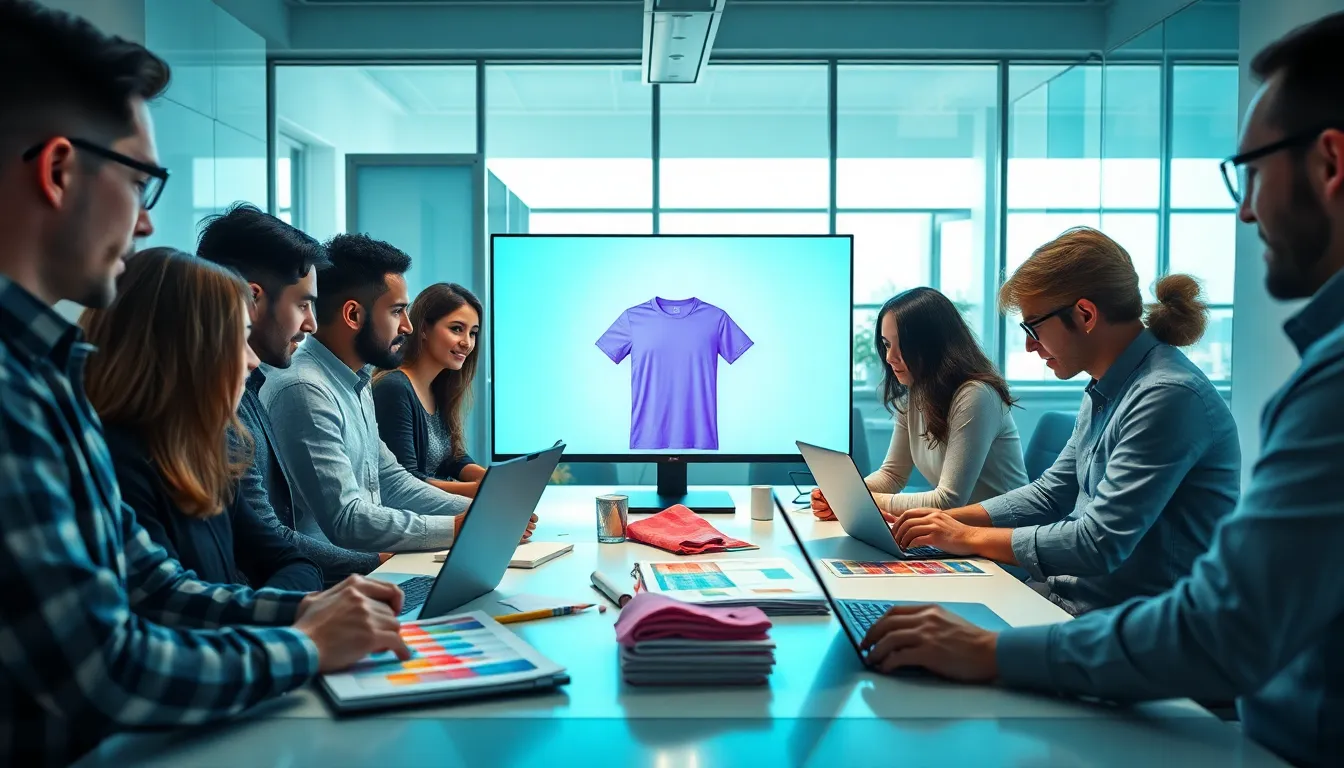
Professional designers increasingly rely on sophisticated techniques to create standout mockup presentations that captivate clients and drive conversions. These advanced methods elevate standard mockups into compelling visual experiences that showcase designs with unprecedented realism and engagement.
3D Modeling and Rendering Applications
Cinema 4D transforms flat t-shirt designs into photorealistic 3D models that clients can examine from every angle. We use its cloth simulation tools to create natural fabric draping and wrinkle patterns that mirror real garment behavior. Advanced rendering engines within the software produce studio-quality lighting effects that enhance fabric textures and color accuracy.
Blender offers powerful 3D modeling capabilities for designers working with limited budgets while maintaining professional output quality. Its sculpting tools allow us to create custom mannequins and body forms that perfectly match target demographics. Material nodes within Blender enable precise fabric simulation including cotton weaves, jersey knits, and vintage washes that respond realistically to virtual lighting conditions.
KeyShot specializes in rapid 3D rendering that produces marketing-ready images in minutes rather than hours. We leverage its material library containing over 750 scientifically accurate fabric presets to match real-industry t-shirt materials. Real-time ray tracing technology allows instant preview of design changes, enabling quick client presentations and approval processes.
ZBrush excels at creating detailed fabric textures and surface imperfections that add authenticity to mockup presentations. Designers can sculpt subtle wear patterns, seam details, and logo embossing effects that traditional 2D mockups cannot replicate. Its retopology tools help optimize 3D models for web presentation while maintaining visual fidelity across different viewing platforms.
Animation and Interactive Mock Ups
After Effects enables designers to create rotating product animations that showcase t-shirt designs from multiple perspectives within single presentations. Motion graphics capabilities allow us to highlight exact design elements through subtle zoom effects and color transitions that draw viewer attention. Template-based animations reduce production time while maintaining consistency across client portfolios.
Principle facilitates interactive mockup creation where clients can toggle between color options, design variations, and styling choices in real time. We build clickable prototypes that simulate e-commerce shopping experiences, allowing stakeholders to visualize customer interactions. User interface elements integrate seamlessly with mockup presentations to demonstrate purchasing workflows and product customization options.
Figma supports collaborative interactive mockups that teams can edit simultaneously during client meetings and design reviews. Its prototyping features enable smooth transitions between different mockup states, creating captivating presentation flows. Version control systems within Figma ensure all team members work with current mockup iterations while maintaining design consistency.
Lottie animations compress complex mockup interactions into lightweight files that load quickly across web platforms and mobile applications. Vector-based animations maintain crisp quality at any screen resolution while reducing bandwidth requirements for client presentations. Integration capabilities allow these animations to embed directly into websites, email campaigns, and social media content.
Custom Photography Integration
Product photography sessions create unique mockup foundations that perfectly match brand aesthetics and target market preferences. We coordinate lighting setups, model selection, and background choices to align with exact client requirements and market positioning. Professional photography equipment including DSLR cameras, softbox lighting, and color-accurate monitors ensure consistent results across multiple shooting sessions.
Composite imaging techniques blend custom photography with design elements to create seamless mockup presentations that appear naturally photographed. Photoshop’s masking tools help integrate logos and graphics onto photographed garments while maintaining realistic shadows and highlights. Color grading processes ensure design elements match the photographic lighting conditions and overall image tone.
Lifestyle integration incorporates custom photography into contextual settings that resonate with target demographics and brand values. We photograph models in environments that reflect brand personality, from urban streetscapes for edgy designs to natural outdoor settings for eco-friendly brands. Multiple shooting angles and poses provide diverse mockup options that support comprehensive marketing campaigns.
Macro detail photography captures fabric textures, stitching patterns, and material qualities that enhance mockup realism and product credibility. Close-up shots of garment construction details help clients understand product quality and manufacturing standards. These detailed elements integrate into standard mockups to create layered presentations that address both aesthetic appeal and technical specifications.
Future Trends in Mock Up T-Shirt Technology
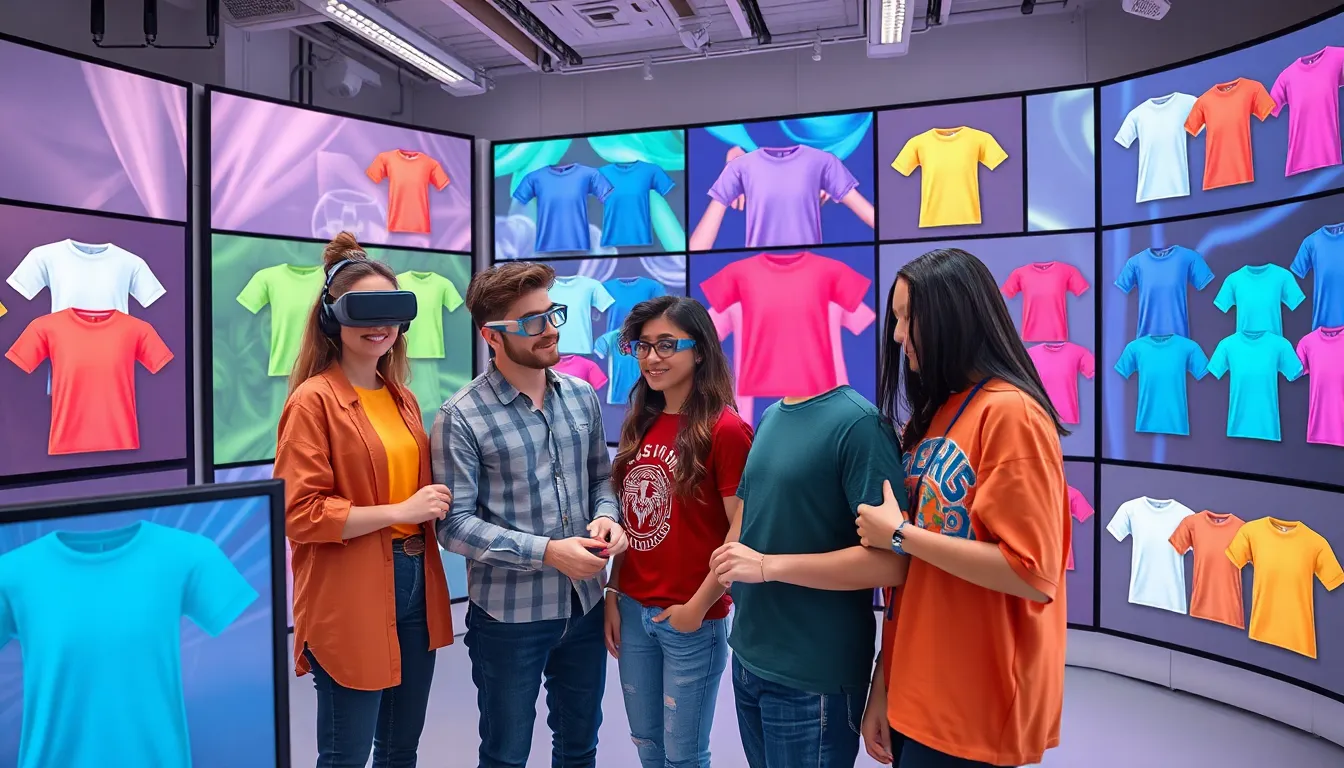
Revolutionary technologies are reshaping how we create and experience mock up t-shirts. These emerging innovations promise to transform our design workflows while addressing environmental concerns.
AI-Generated Mock Up Possibilities
Machine learning algorithms are revolutionizing mock up t-shirt creation by automatically generating realistic fabric textures, wrinkles, and lighting effects. We’re witnessing AI platforms that can produce hundreds of mockup variations within minutes, adjusting everything from body proportions to environmental settings based on simple text prompts.
Advanced neural networks now analyze design elements and automatically recommend optimal placement, sizing, and color combinations for maximum visual impact. These systems learn from millions of successful mockup examples to suggest improvements that enhance brand appeal and customer engagement.
Generative AI tools are eliminating traditional photography requirements by creating photorealistic models wearing our designs in various poses and settings. We can now specify demographic characteristics, clothing styles, and background environments to match our target audience perfectly without expensive photo shoots.
Real-time personalization capabilities allow customers to visualize designs on different body types, ages, and ethnicities instantly. This technology helps brands create more inclusive marketing materials while reducing the time and cost associated with diverse mockup creation.
Virtual Reality Preview Options
Immersive VR platforms are enabling designers to walk around 3D mock up t-shirts and examine every detail from multiple angles before production. We can now inspect fabric behavior, seam placement, and design positioning in virtual environments that mirror real-industry conditions.
Interactive VR showrooms allow clients to experience mockup presentations in branded virtual spaces that reflect their company aesthetics. These environments create memorable presentations that surpass traditional screen-based mockup viewing experiences.
Haptic feedback technology is adding tactile sensations to VR mockup experiences, letting us feel fabric textures and garment weight through specialized gloves and controllers. This advancement bridges the gap between digital mockups and physical samples.
Collaborative VR meetings enable remote teams to review mockup designs together in shared virtual spaces, pointing out exact elements and making real-time adjustments regardless of geographic location.
Sustainable Mock Up Practices
Cloud-based rendering services are reducing energy consumption by optimizing computational resources across shared servers instead of requiring individual high-powered workstations. We’re seeing important carbon footprint reductions as designers shift to these efficient platforms.
Digital-first workflows are eliminating physical sampling requirements by providing mockups so accurate that clients approve designs without requesting material samples. This approach saves fabric waste, shipping emissions, and production costs throughout the design process.
Eco-conscious template marketplaces are promoting mockups created with sustainable photography practices, including energy-efficient lighting setups and locally sourced materials for background props. These platforms often feature carbon offset programs for their digital operations.
Lifecycle assessment tools are being integrated into mockup software to calculate the environmental impact of design choices before production begins. We can now compare different fabric options, printing methods, and packaging answers directly within our mockup presentations to make informed sustainability decisions.
Conclusion
We’ve explored the comprehensive industry of mockup t-shirts from fundamental techniques to cutting-edge technologies. These powerful tools continue to revolutionize how we present designs and connect with clients across every industry.
The industry is evolving rapidly with AI integration VR capabilities and sustainable practices reshaping our approach. We’re witnessing unprecedented opportunities to create more captivating personalized and environmentally conscious mockup experiences.
Whether you’re just starting with basic templates or implementing advanced 3D rendering techniques the key lies in choosing tools that align with your brand vision and budget. We encourage you to experiment with different approaches and stay updated on emerging trends.
The future of mockup t-shirt design is bright and we’re excited to see how these innovations will transform your creative process and business success.
Frequently Asked Questions
What are t-shirt mockups and why are they important?
T-shirt mockups are digital templates that showcase designs on realistic garment representations. They’re crucial because they allow designers to visualize artwork before production, saving time and money while enhancing client communication. Mockups streamline the design presentation process and help create effective marketing materials without the need for physical samples.
What software is best for creating t-shirt mockups?
Adobe Photoshop is the industry gold standard, offering advanced customization through smart objects and layer masking. For beginners, online platforms like Placeit and Mockup Industry provide user-friendly alternatives. Template marketplaces like GraphicRiver and Creative Market offer ready-made Photoshop-compatible files for quick professional results.
What resolution should t-shirt mockups have?
Quality t-shirt mockups should have a minimum resolution of 3000×3000 pixels at 300 DPI with 16-bit color depth. This ensures sharp, professional results suitable for both digital presentations and print materials. Higher resolutions provide better flexibility for cropping and scaling without losing image quality.
How do I choose the right t-shirt mockup style?
Select mockup styles based on your brand identity and target audience. Classic crew necks offer universal appeal and versatility. V-necks and scoop necks work well for fashion-forward brands. Long sleeves and tank tops provide seasonal marketing opportunities. Always align your choice with your brand messaging and demographic preferences.
What are common mistakes to avoid with t-shirt mockups?
Avoid using low-resolution designs that appear pixelated, maintaining unrealistic proportions that look unprofessional, and inconsistent branding elements across presentations. Always ensure proper design placement following industry standards, use high-quality source files, and maintain brand guideline consistency to achieve professional results.
Can I create professional mockups on a budget?
Yes, there are many budget-friendly options. Free resources like Freepik and Unsplash offer quality templates. Subscription platforms like Envato Elements provide unlimited downloads at affordable rates. You can also create DIY mockups using smartphone photography and basic editing techniques, or modify existing templates to reduce costs.
What advanced techniques can improve mockup presentations?
Advanced techniques include 3D modeling using Cinema 4D or Blender, creating animations with After Effects, and integrating custom photography. Virtual reality previews and AI-generated mockups are emerging trends. These methods create more engaging, photorealistic presentations that stand out in competitive markets and improve client conversion rates.
How should I present mockups to clients professionally?
Present 3-5 mockup variations to showcase design potential, organize them chronologically to tell a story, and include technical specifications to build trust. Show multiple colorways and add lifestyle context to help clients visualize the final product. Maintain consistent visual branding throughout all presentations for professional credibility.
What file formats work best for t-shirt mockups?
PSD (Photoshop) files are preferred for maximum customization and layer control. PNG files with transparent backgrounds work well for simple applications. Smart object-enabled templates offer the easiest design placement. Ensure mockups are compatible with your workflow software and include proper licensing for commercial use.
How will mockup technology evolve in the future?
Future trends include AI-generated mockups with machine learning algorithms, VR preview options for immersive client experiences, and sustainable cloud-based rendering services. Real-time personalization and generative AI tools will eliminate the need for traditional photography. These innovations will make mockup creation more efficient, inclusive, and environmentally friendly.

